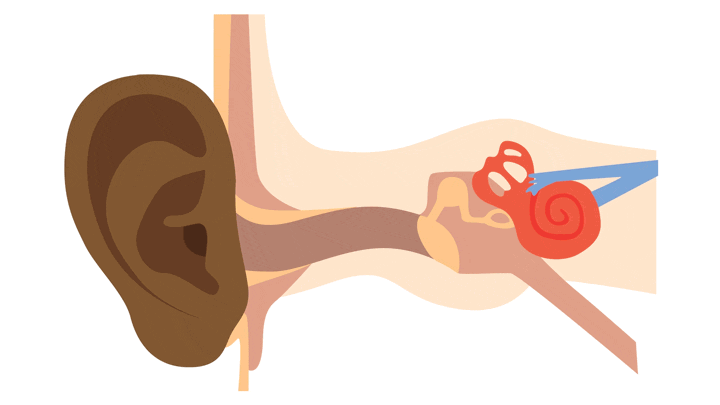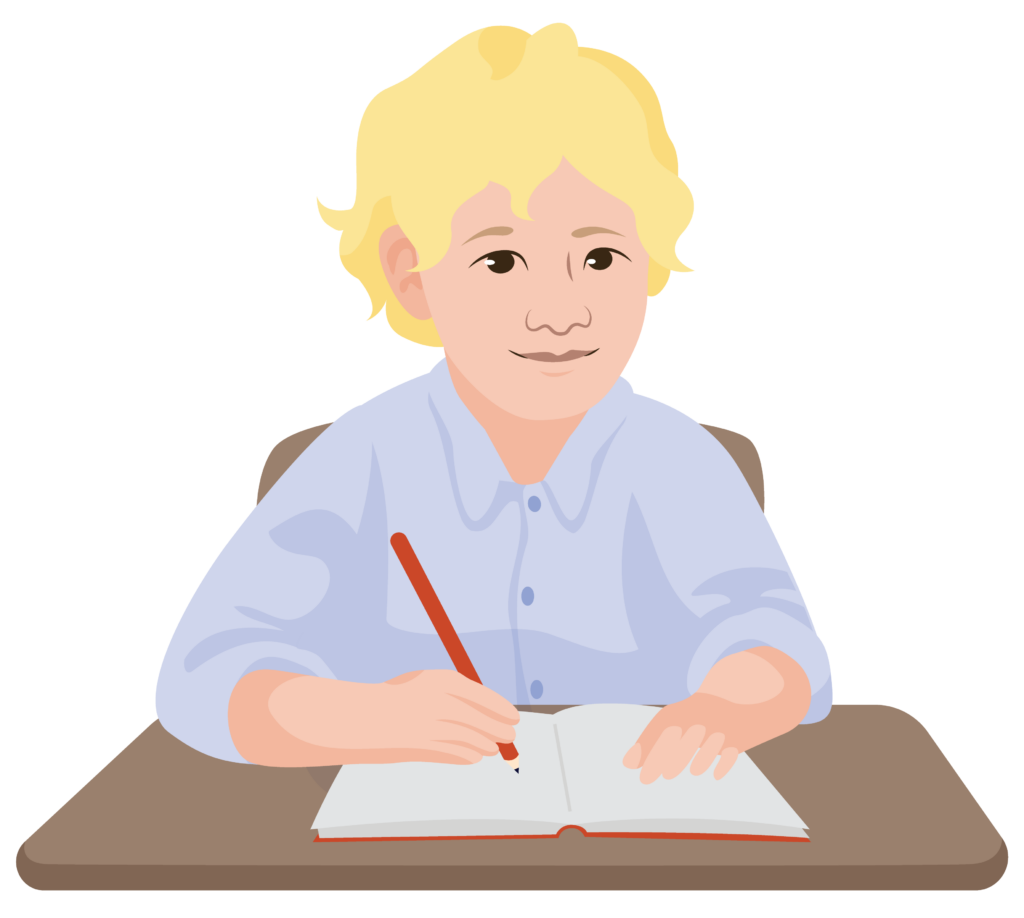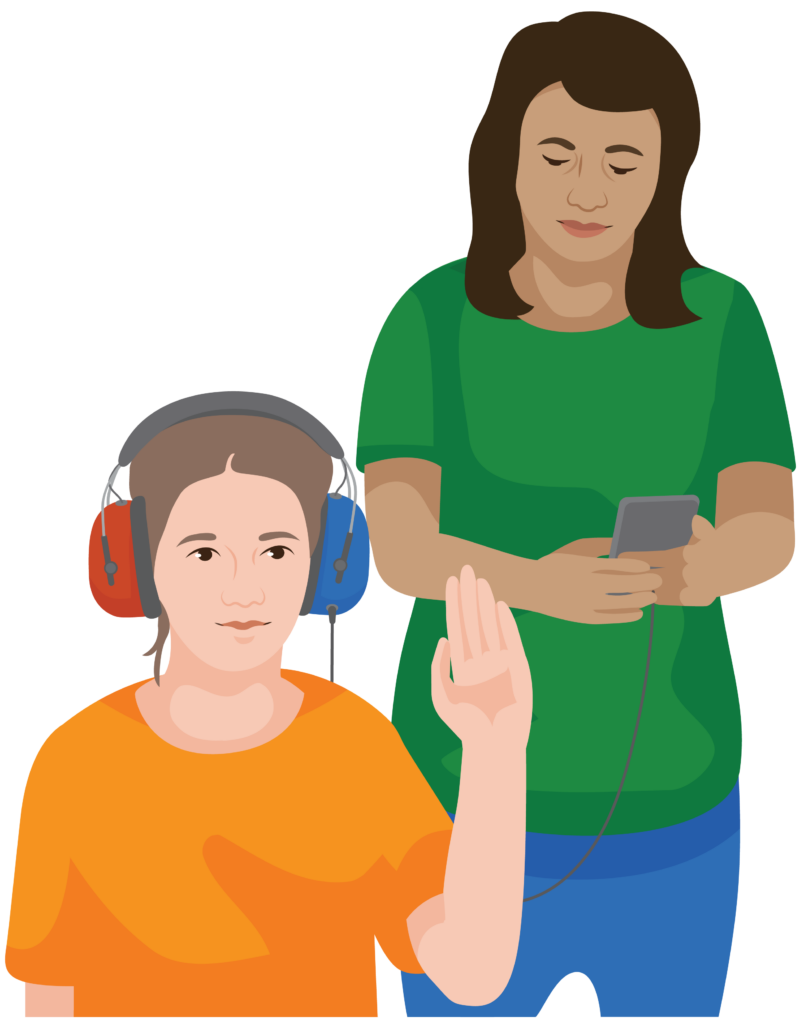Maelekezo
Katika mada hii utajifunza kuhusu kusikia na Matatizo ya kusikia kwa watoto.
Jinsi tunavyosikia
- masikio yetu hukusanya sauti
- Sauti hizo husafiri kupitia sehemu tatu za sikio
- Sauti hubadilishwa kuwa kwenye mfumo wa umeme ambazo hutumwa kwenye ubongo
- Sauti zilizo katika mfumo wa umeme zikifika kwenye ubongo, tunasikia sauti na tUnaweza kuzitambua.
Ili kuweza kusikia vizuri, sehemu zote za sikio zinapaswa kufanya kazi vizuri.

Matatizo ya kusikia
Watu wenye Matatizo ya kusikia wana ugumu wa kusikia au kutambua sauti.
Kazi
Washiriki wakiwa kwenye jozi:
- Mtu mmoja ameziba masikio yake pande zote mbili kwa kidole chake au kwa kutumia viziba masikio
- Mtu mwingine anatumia sauti yake ya kawaida na anajaribu kufanya mazungumzo.
Hivi ndivyo unavyohisi unapopopoteza usikivu kwa kiwango kidogo hadi kiwango cha wastani.
Kupoteza usikivu kwa kiwango kidogo hadi kiwango kikubwa
Kupoteza kusikia pia hujulikana kama 'taabu katika kusikia'.
Mtoto aliyepoteza usikivu kwa kiwango kidogo, wastani au sana hawezi kusikia kama wawezavyo watoto wengine.
Wana shida na:
- kusikia watu wengine wanasema nini katika mazingira tulivu na yenye kelele
- Kufanya kazi za kila siku, Ikiwa ni pamoja na kujifunza, bila msaada wa Bidhaa Saidizi kama vile Vifaa saidizi vya usikivu.
Kutana na Patryk

Patryk ana umri wa miaka sita na anaenda shule. Patryk hupata maambukizi ya sikio mara kwa mara.
Patryk anapata shida kusikia watu wanasema nini wanapozungumza wakiwa mbali, au pale ambapo kuna kelele za chinichini kama vile darasani.
Kupotea kwa usikivu kwa kiwango kikubwa zaidi
Mtoto aliye na upotevu mkubwa wa kusikia, katika masikio yote mawili, anaweza kusikia kwa kiwango kidogo sana au kutokusikia kabisa. Hii inaitwa 'ukiziwi'.
Kinga, matibabu na usaidizi
Matatizo mengi ya kusikia yanaweza kuwa:
- Kuzuiwa/Kutumia kinga yasitokee. Kwa mfano, kuvaa spika za masikioni kwenye sehemu zenye kelele
- Kutibiwa. Kwa mfano, kupokea dawa kwa Matatizo ya Afya ya masikio
- Kusaidiwa. Kwa mfano, kupitia Bidhaa Saidizi na/au utengamo.
Kutana na Garret

Garret ana umri wa miaka 9 na anaishi katika kijiji cha wavuvi. Anapenda kuogelea baharini na marafiki zake. Garret ana maumivu ya mara kwa mara na anatokwa na uchafu kwenye masikio yake.
Wakati wa upimaji wa usikivu na uoni uliofanyika katika shule yake, mpimaji aligundua kuwa Garret ana Matatizo ya Afya ya masikio.
Alipewa rufaa kwenda kuonana na wataalamu wa huduma ya masikio na alipewa matibabu ya ugonjwa wa sikio lake.
Swali
Ni jambo gani kati ya haya yafuatayo ni mfano wa namna ya kuzuia Matatizo ya kusikia?
Chagua jibu moja.
Uko sahihi kama umechagua " b" kama Jibu sahihi
Kuepuka kelele kubwa ni njia muhimu ya kuzuia uharibifu wa usikivu wa mtoto.
majibu a, c, na d sio sahihi.
Mambo yaliyotajwa hayazuii matatizo ya kusikia. Matibabu yanatumika kutibu Matatizo ya kiafya yaliyopo. Bidhaa saidizi na bidhaa za kutegemeza mtu aliyepoteza usikivu kushiriki na kujumuishwa katika shughuli.
Majadiliano
Jadili na Wanafunzi wenzako:
- Je, wewe au kuna mtu mwingine ambaye unamjua anatumia Vifaa saidizi vya usikivu?
- Je, matokeo yatakuwaje kwa mtoto anayehitaji Vifaa saidizi vya usikivu lakini hawezi kuvipata?

Je, kusikia kunapimwaje?
kusikia kunapimwa kwa kutumia Kipimo cha usikivu.
Hii inahusisha mtoto kusikiliza sauti kupitia vipokea sauti vya masikioni na kuonyesha ni sauti zipi anazoweza kuzisikia.
sauti hutolewa na kipima sauti. Kwa mfano, kishikwambi ya kidijitali au simu janja iliyopakiwa na programu ya upimaji wa kusikia.
Maelekezo
Jifunze jinsi ya kutumia Kipimo cha usikivu kwenye upimaji wa kusikia, katika Somo la nne .
Aina tofauti za sauti huwasilishwa kwa sikio la mtu kwa masafa tofauti.
Kwa mfano, sauti ya kiume huwa ina masafa ya chini ya masafa kuliko sauti ya kike.
masafa ya sauti hupimwa katika Hertz (Hz).